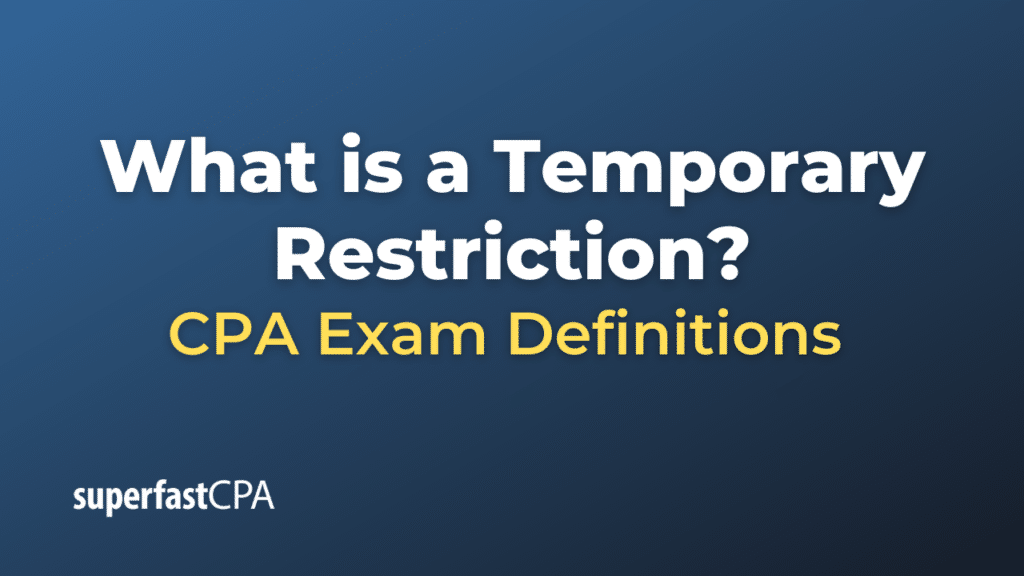Temporary Restriction
In the context of nonprofit organizations and accounting, a “temporary restriction” refers to donations or contributions that are limited in use by the donor for a specific purpose or time period. When donors give funds to a nonprofit, they can specify how they want their funds to be used, or when they can be used. When these donor-imposed restrictions are met, the funds are then “released” from restriction, and the organization can use them as part of their general operating funds.
Temporary restrictions can be:
- Purpose-Restricted: The donor specifies the purpose for which the funds should be used. For instance, if someone donates money to a university and stipulates it’s for a specific research project, those funds are temporarily restricted to that project.
- Time-Restricted: The donor specifies a time frame for when the funds can be used. For example, a donation may be given to an organization with the stipulation that it can only be used after a certain date or event.
On the financial statements of a nonprofit, temporarily restricted assets are shown separately from unrestricted assets. When the conditions of the restriction are met (either the specified purpose is achieved, or the time restriction elapses), the funds are “released from restriction” and reclassified as unrestricted funds.
Example of a Temporary Restriction
Let’s delve into a specific scenario to further clarify the concept of temporary restrictions.
Scenario: City Library Donation
Background: The Smith family is passionate about literature and education. To support their local community, they decide to donate $50,000 to the “City Library.” However, they want their donation to be used specifically for purchasing children’s books and educational materials over the next two years.
When the Smith family makes this donation, they specify their conditions, making their contribution a temporarily restricted donation.
How It’s Handled in Financial Statements:
Year 1:
When City Library receives the donation:
- Balance Sheet:
- Temporarily Restricted Net Assets increase by $50,000.
- Unrestricted Net Assets remain unchanged.
Year 1 Activities:
Throughout the year, the City Library spends $30,000 of the Smith family’s donation on children’s books and educational materials.
- Statement of Activities:
- Expenses: $30,000 under “Children’s Books and Educational Materials.”
- Net Assets Released from Restrictions: $30,000 (reflecting that $30,000 of the donation has been spent for its intended purpose).
- Balance Sheet (end of Year 1):
- Temporarily Restricted Net Assets: $20,000 (remaining unspent amount)
- Unrestricted Net Assets increase by $30,000 (reflecting the portion of the donation that has been used and released from restrictions).
Year 2 Activities:
The City Library spends the remaining $20,000 of the Smith family’s donation on children’s literature.
- Statement of Activities:
- Expenses: $20,000 under “Children’s Books and Educational Materials.”
- Net Assets Released from Restrictions: $20,000.
- Balance Sheet (end of Year 2):
- Temporarily Restricted Net Assets: $0 (all funds have been used for their intended purpose)
- Unrestricted Net Assets increase by an additional $20,000.
In this example, the City Library ensures it uses the Smith family’s donation strictly for the purpose designated by the donors. By tracking the donation as a temporarily restricted asset and gradually releasing it to unrestricted assets as it’s used, both the library and its donors can transparently see how the funds are utilized.













